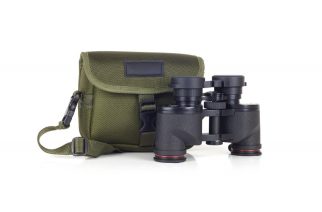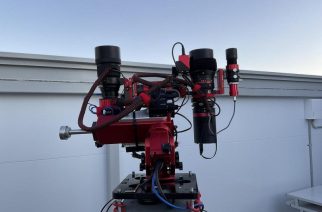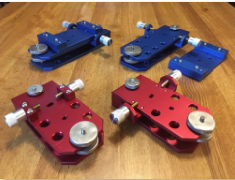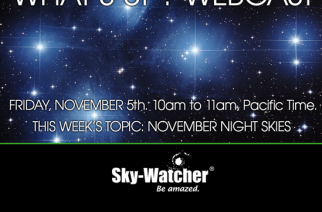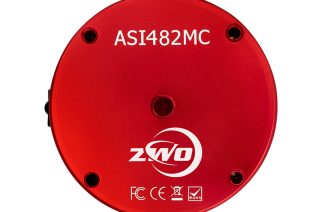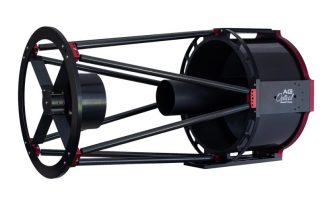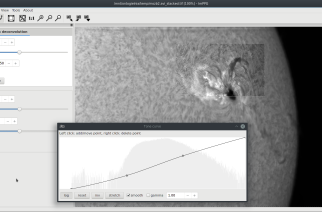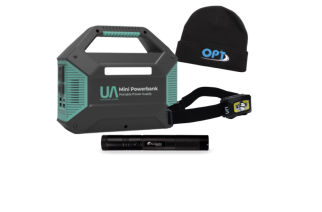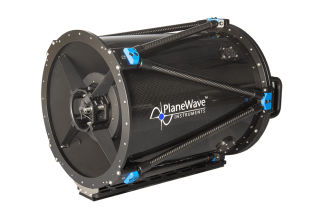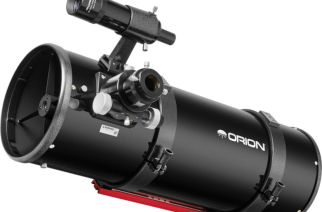The all new APM Magnesium Series B6×30 binoculars is the newest model in the APM Magnesium Series lineup and are perfect for scanning night skies, hiking and outdoor sports. The APM Magnesium Series 6×30 binoculars are weatherproof and waterproof offering a classic design with BAK4 Poro prisms.. With a field […]
Author: Stuart Parkerson
New Widefield Data Subscription
Martin Pugh Astrophotography is offering a new southern hemisphere widefield data subscription. The setup includes: – Avalon M-Zero Mount – no more meridian flips – Primary Camera: ZWO ASI 2600MC Pro One-Shot-Color with additional dual-band filter. – ASKAR 200mm f4 lens – Secondary Camera: QHY600 One-Shot Color with visible spectrum […]
Quick Release Angle Base for Guide Scopes
A quick release angle base for guide scopes is being offered by Lftscope, a new niche astronomy company. The patent pending QRAB (Quick Release Angle Base) is an accessory that splits into 2 separate plates, one to mount to the top of an imaging scope, the other to mount to […]
Night Skies of November
The night skies of November will be the subject this week on the Sky-Watcher What’s Up? Webcast. The Sky-Watcher team will check out the night skies of November; from the full moon, comets, meteor showers to a selection of deep sky targets to image and observe. The Sky-Watcher What’s Up? […]
New ASI Planetary Cameras
Two new ZWO ASI planetary cameras are now available. The ZWO ASI482MC and ZWO ASI485MC are cameras that offer 1.2″ format backlit sensors, extremely high sensitivity and excellent visibility at low illumination. Both cameras offer a generous sensor and excellent noise performance for imaging planets, the Moon and Sun, and […]
AG Optical Systems 17″ iDK Telescope
AG Optical Systems has announced the company has two 17″ iDK Telescopes available in their current production run. The AG Optical Systems .4 meter (17 inch) F6.7 Imaging Dall Kirkham (iDK) telescope is an observatory-class imaging instrument featuring a 70mm flat field imaging circle free from coma, astigmatism, and field […]
ImPPG Image Post Processing Software
ImPPG is an image post processoring program that performs Lucy-Richardson deconvolution, unsharp masking, brightness normalization and tone curve adjustment. It can also apply previously specified processing settings to multiple images. All operations are performed using 32-bitfloating-point arithmetic. A new version of the software has recently been released with new features […]
AAVSO Annual Meeting and Spectroscopy Workshop
The 2021 AAVSO Annual Meeting will be held in person from November 5–7 in Somerville, MA, and will include AAVSO observers and other citizen scientists presenting both in person and remotely. The meeting includes keynote speakers, presentations by professional and amateur astronomers, an opening reception and banquet. The event will […]
Backyard Observatories
Backyard observatories and what it takes to build one will be the subject this week on the Sky-Watcher What’s Up? Webcast. For many astronomers owning their own observatory is a dream come true. Before diving into such a project there are a few things to consider. The Sky-Watcher team will […]
Universal Astro Astronomy Accessories
Universal Astro represents a broad line of accessories offered by OPT. These include such products as Digital Calipers, Laser Pointers. Ball Heads, AC Adaptors, Telescope Maintenance and Cleaning products, Soft Cases, Brackets and Clamps and more. For example, included in the product lineup is the Universal Astro Star Party Essentials […]
PlaneWave 14-inch DeltaRho 350
The PlaneWave 14-inch DeltaRho 350 Cassegrain Reflector Telescope is designed for unsurpassed wide-field imaging and ease of use in the field. The PlaneWave 14-inch DeltaRho 350 is a widefield astrograph designed for astrophotography, research surveys, and space domain awareness applications where large fields of view are required. With 1,050mm of […]
Orion 10″ f/4 Newtonian Reflector Astrograph
The Orion 10″ f/4 Newtonian Reflector Astrograph offers an affordable, fast astrograph with immense light-gathering ability. The telescope offers a 250mm (9.8″) parabolic primary mirror which is made of low-thermal-expansion BK7 glass. The 1,000mm focal length is ideal for framing a wide variety of celestial targets. The enhanced aluminum mirror […]


